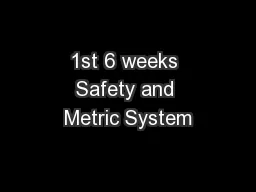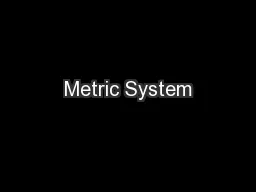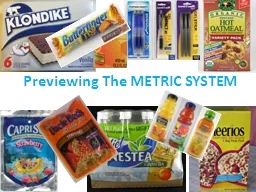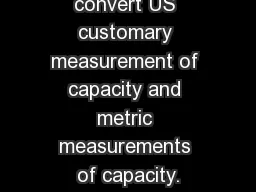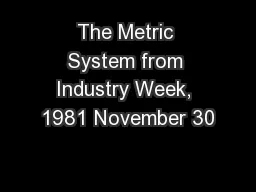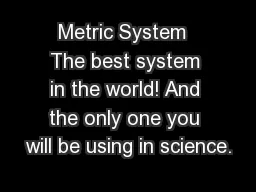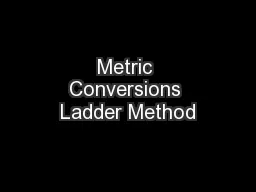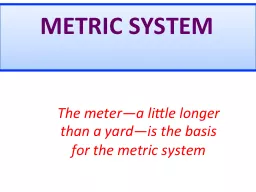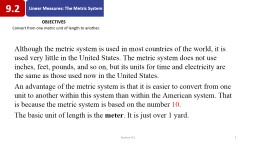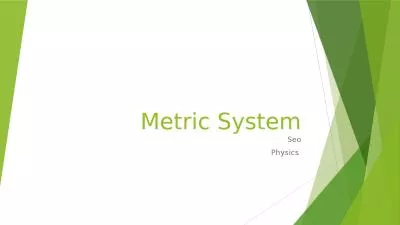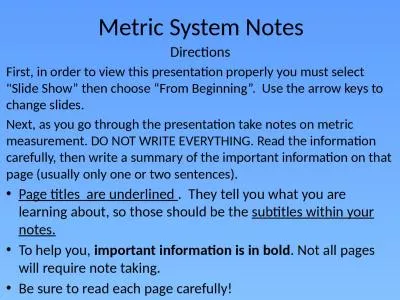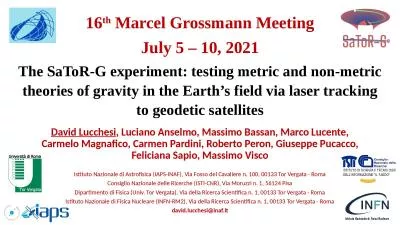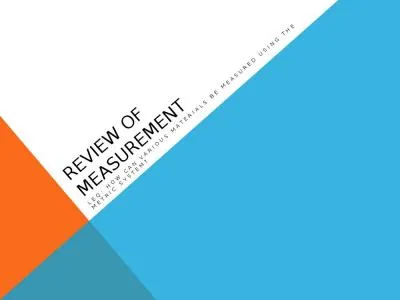PPT-1st 6 weeks Safety and Metric System
Author : aaron | Published Date : 2018-11-08
Lessons Ms Johnson Today BELL WORK Get out your planner Find your passport Finish decorating the front cover Finish start your goals page Finish start your Tchart
Presentation Embed Code
Download Presentation
Download Presentation The PPT/PDF document "1st 6 weeks Safety and Metric System" is the property of its rightful owner. Permission is granted to download and print the materials on this website for personal, non-commercial use only, and to display it on your personal computer provided you do not modify the materials and that you retain all copyright notices contained in the materials. By downloading content from our website, you accept the terms of this agreement.
1st 6 weeks Safety and Metric System: Transcript
Download Rules Of Document
"1st 6 weeks Safety and Metric System"The content belongs to its owner. You may download and print it for personal use, without modification, and keep all copyright notices. By downloading, you agree to these terms.
Related Documents

